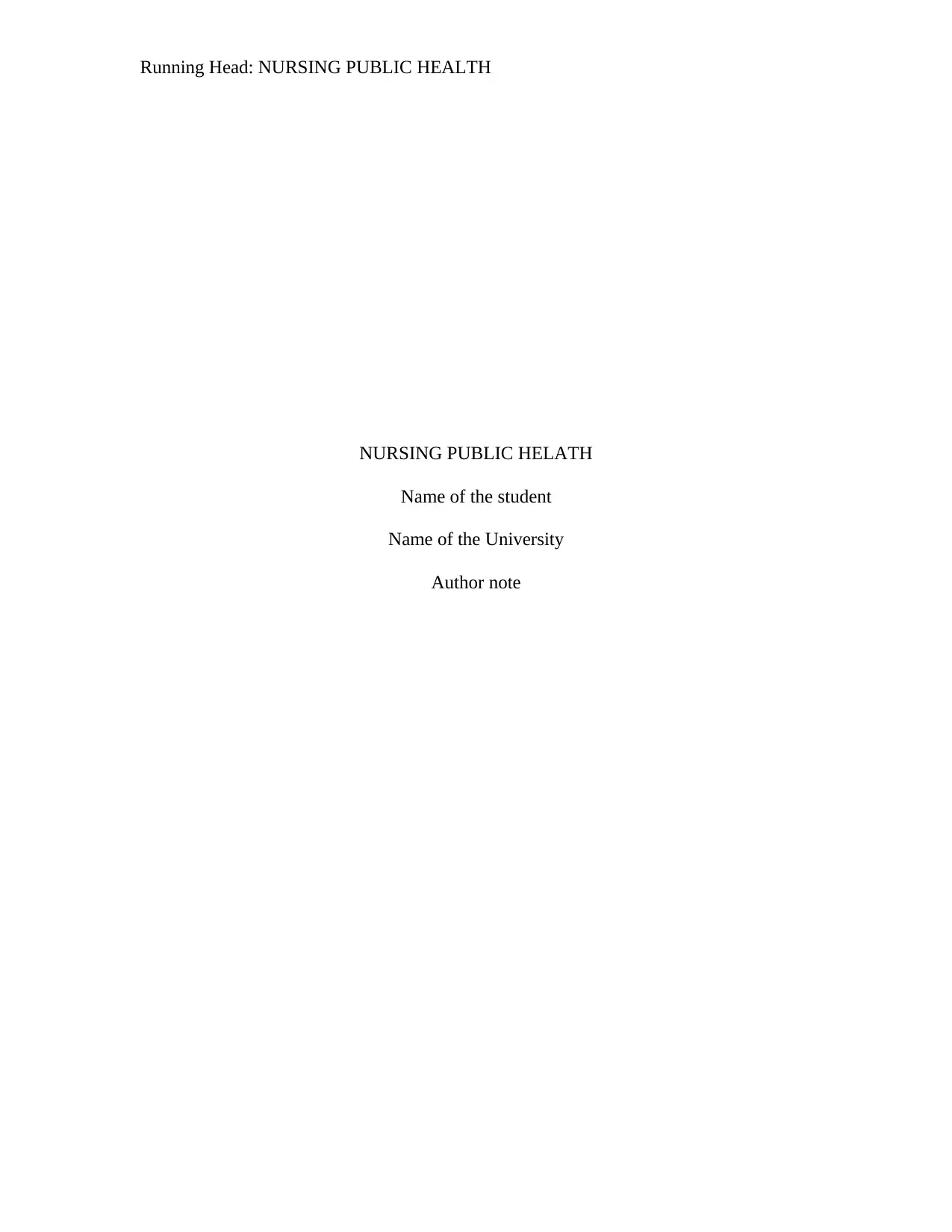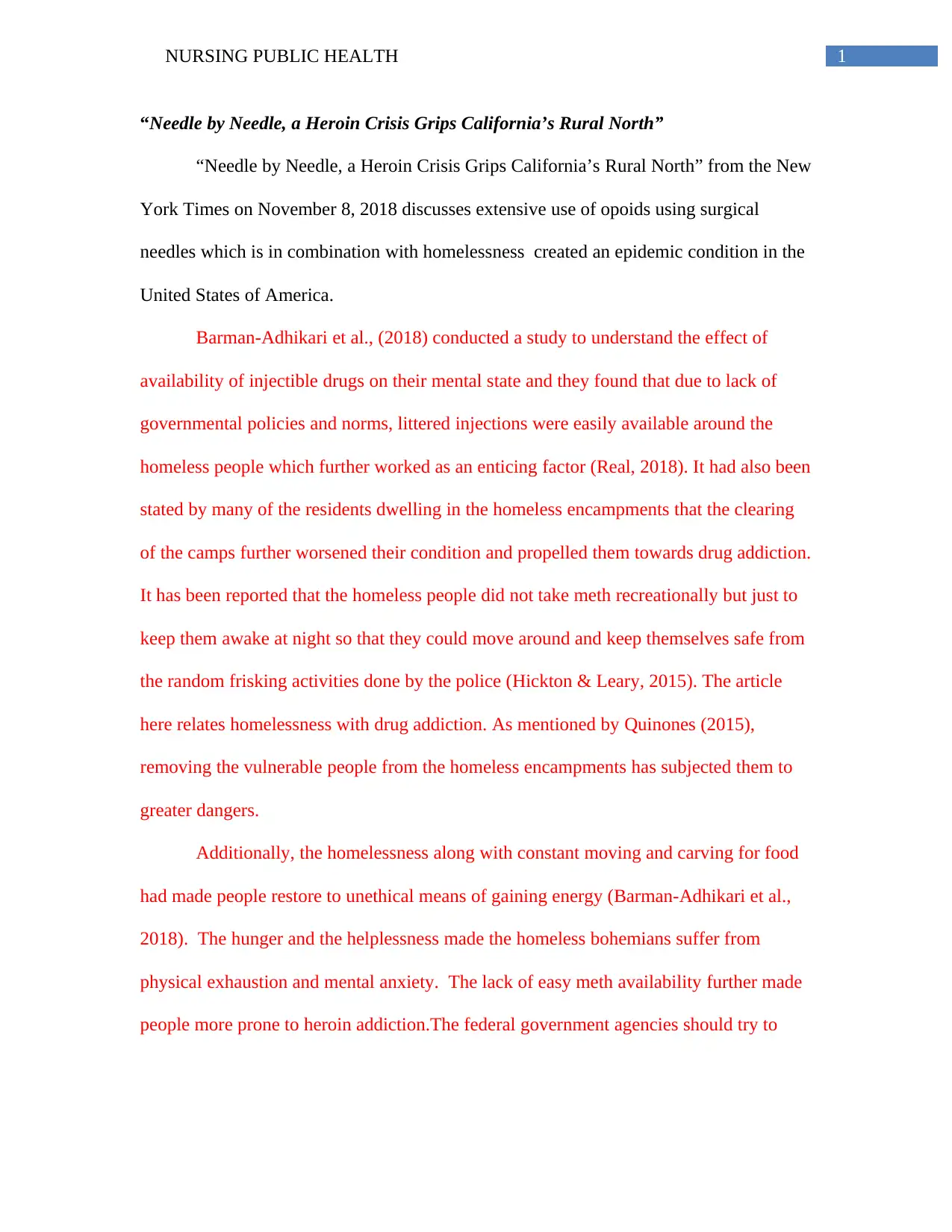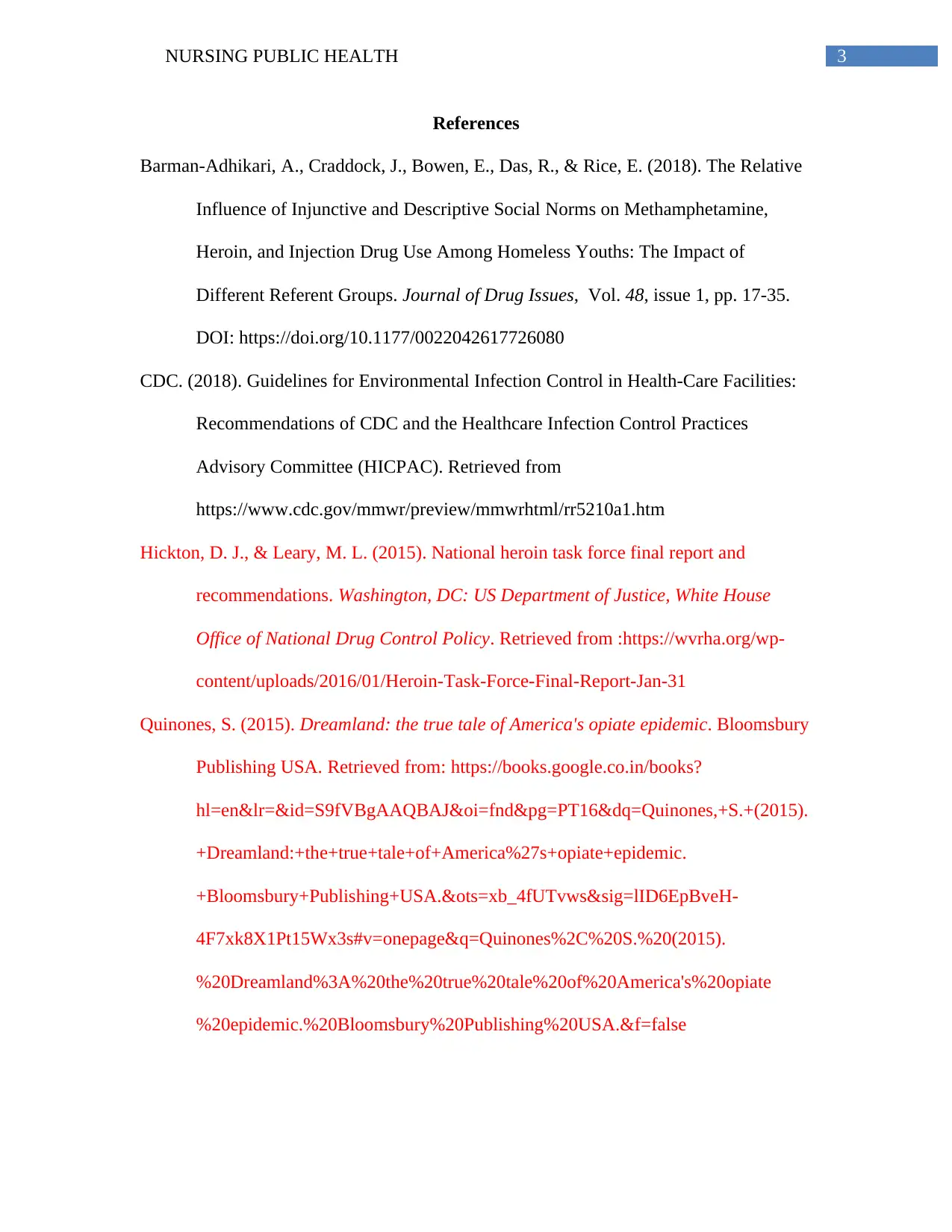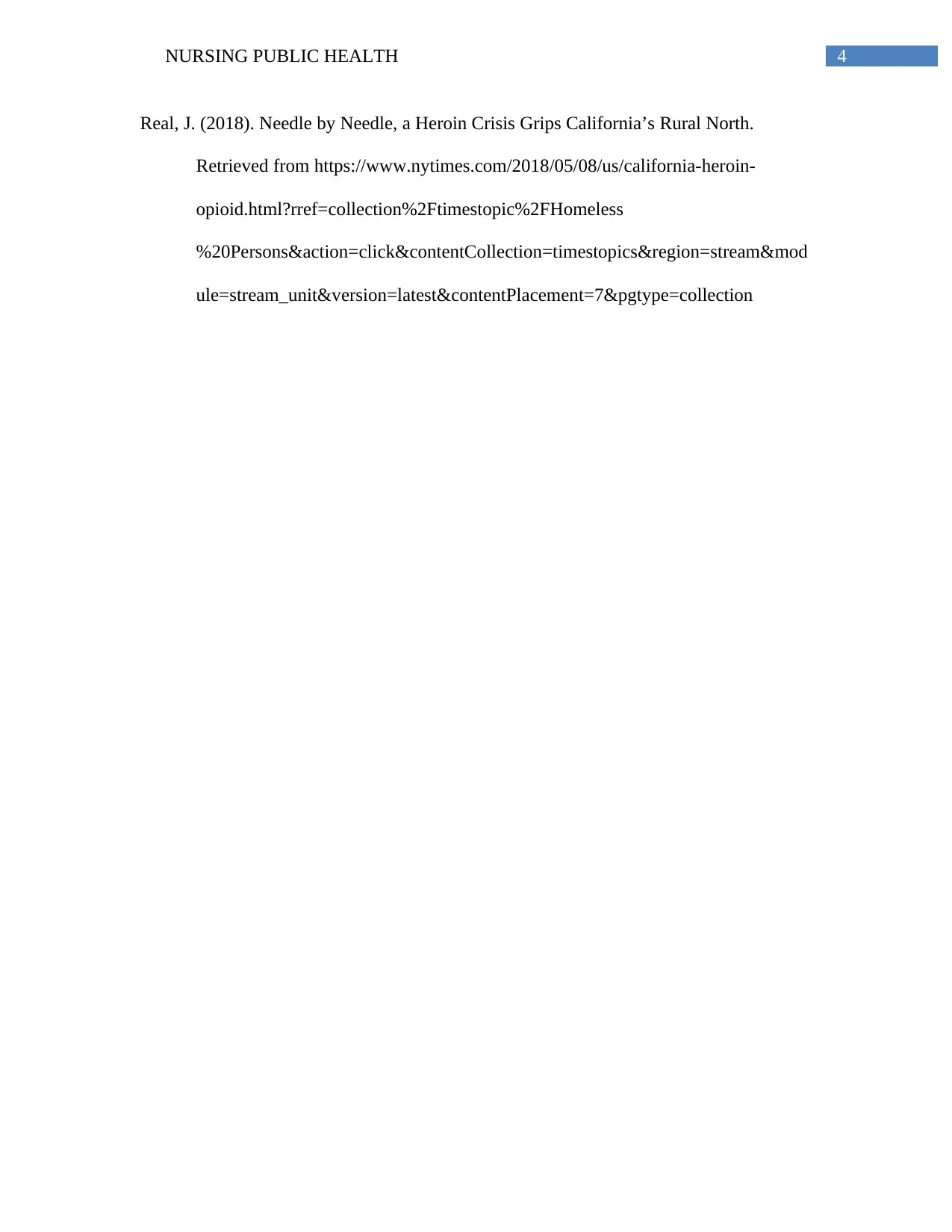Public Health Nursing: Examining Heroin Crisis in Rural California
VerifiedAdded on 2023/06/11
|5
|670
|165
Essay
AI Summary
This essay examines the heroin crisis in California's rural north, focusing on the intersection of opioid use, homelessness, and public health. It references a New York Times article detailing the epidemic and incorporates research on the impact of injectable drugs on mental health among homeless populations. The essay highlights the challenges faced by homeless individuals, including the use of meth for survival and the increased risk of heroin addiction due to lack of resources and support. It emphasizes the need for federal government agencies to expand social support programs for the homeless to address the root causes of addiction and improve public health outcomes, citing relevant studies and guidelines from organizations like the CDC.
1 out of 5






![[object Object]](/_next/static/media/star-bottom.7253800d.svg)